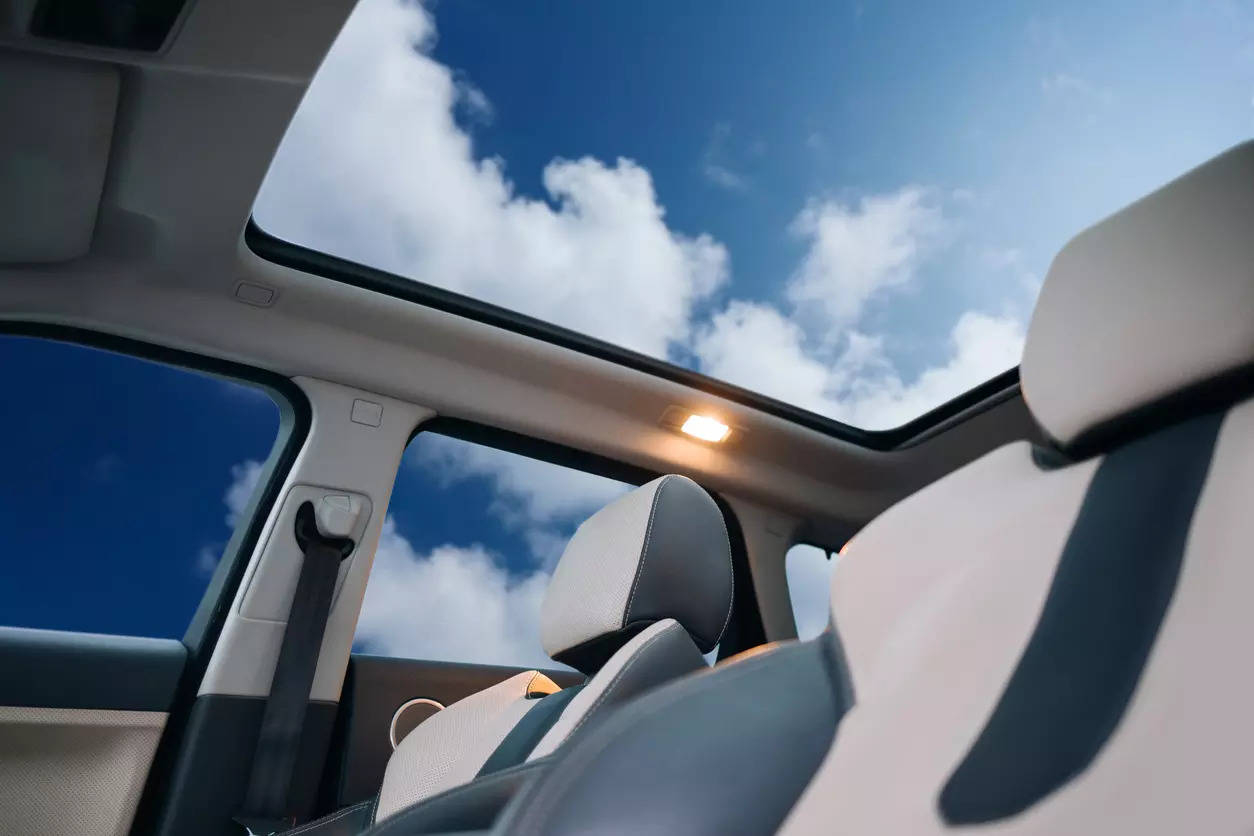
Mumbai: Craze for cars with a view is helping break the ‘class ceiling’. What was once restricted to luxury wheels, the ‘glass ceiling’ has caught the attention of mass-market car buyers who are willing to loosen their purse strings for visual appeal. Sunroof’s penetration in India has jumped five-fold in five years, forcing companies that supply these sleek glass panels to carmakers to invest in new plants to meet demand. One in every four cars sold in India today has a sunroof.What is driving demand given that most of the country has unfavourable weather conditions and many of you may not really stand up through a sunroof — unless you are a politician or a ‘reel-maker’?
The sunroof’s appeal lies in the unconventional view it provides—think Vistadome train coaches and glass-bottom boats. It lightens up a car’s cabin and at the same time heightens its owner’s social status.
The surge in demand for sunroofs is largely due to the perceived luxury akin to other features like touchscreens and keyless ignition found in top-end variants of mass-market cars.
“Sunroofs may not be opened often but they still have an undeniable appeal. For instance: Cruising down a treelined road in a car with a sunroof can be very enjoyable. Sunroof is often seen as a luxury rather than a practical addition in Indian weather conditions, but it is becoming an increasingly sought-after feature. The status associated with having a sunroof can be a reason why buyers seem to like it, despite the added weight in the worst possible place (a car’s roof),” said Ravi Bhatia, president and director, Jato Dynamics India.
This surge is partly linked to the craze for SUVs, which has been driving car sales inrecent years. Nearly 85% of SUVs (including compact ones) in the market feature a sunroof, data from Jato Dynamics, an automotive market research company, showed. At the same time, carmakers have introduced sunroofs in smaller, sub-Rs 10 lakh cars like Hyundai i20 and Tata Altroz—wooing customers who can stretch their budgets by about Rs 50,000.
Maruti Suzuki, a popularchoice for value-conscious car buyers, offered a sunroof for the first time in its Brezza compact SUV last year. Maruti Suzuki dealer sources said that customers with a Rs 15-lakh budget have been converting to higher variants due to the bells and whistles. The penetration of sunroofs in hatchbacks and multi-purpose vehicles has doubled to about 3. 5% in just 3 years.
Be it the perception of luxury or practicality, sunroof makers in India are betting that demand will continue to grow. They are boosting capacity, setting up new plants and partnering with global companies to localise production. The sunroof market in India is dominated by Germany’s Webasto. The company, which had expanded its Pune operations last year, opened its second India plant in Chennai two months ago. The company plans to invest Rs 1,000 crore to more than double its capacity to 9. 5 lakh units by 2023, it said.
“The Indian market is seeing extremely rapid growth and openable panoramic roofs are in particularly high demand,” Jan Hennig Mehlfeldt, who oversees the global roof business at Webasto, said. Different roof types will exist in India—smaller tilt sunroofs with one glass panel and larger panoramic roofs with two panels, a Webasto spokeswoman said in response to TOI’s queries.
Webasto will soon have competition from Dutch company Inalfa—it announced a partnership with Anand Group’s Gabriel India in May (a 2-lakh unit plant in Chennai). For Gabriel, this is a move to diversify beyond its core suspension business.
“The price elasticity of a customer who is going for SUVs is actually quite high. They are willing to expand their ticket size to meet their aspiration. . . The fully loaded version sells the most,” Gabriel India’s MD Manoj Kolhatkar said in an earnings call in June.
“Sunroofs are also getting introduced in hatchback cars. A huge segment of car buyers don’t just want personal mobility after Covid. . . they are travelling more for leisure,” Kolhatkar told TOI.
Apart from the two European majors, other suppliers in India include CIE Golde and Yachiyo.
















